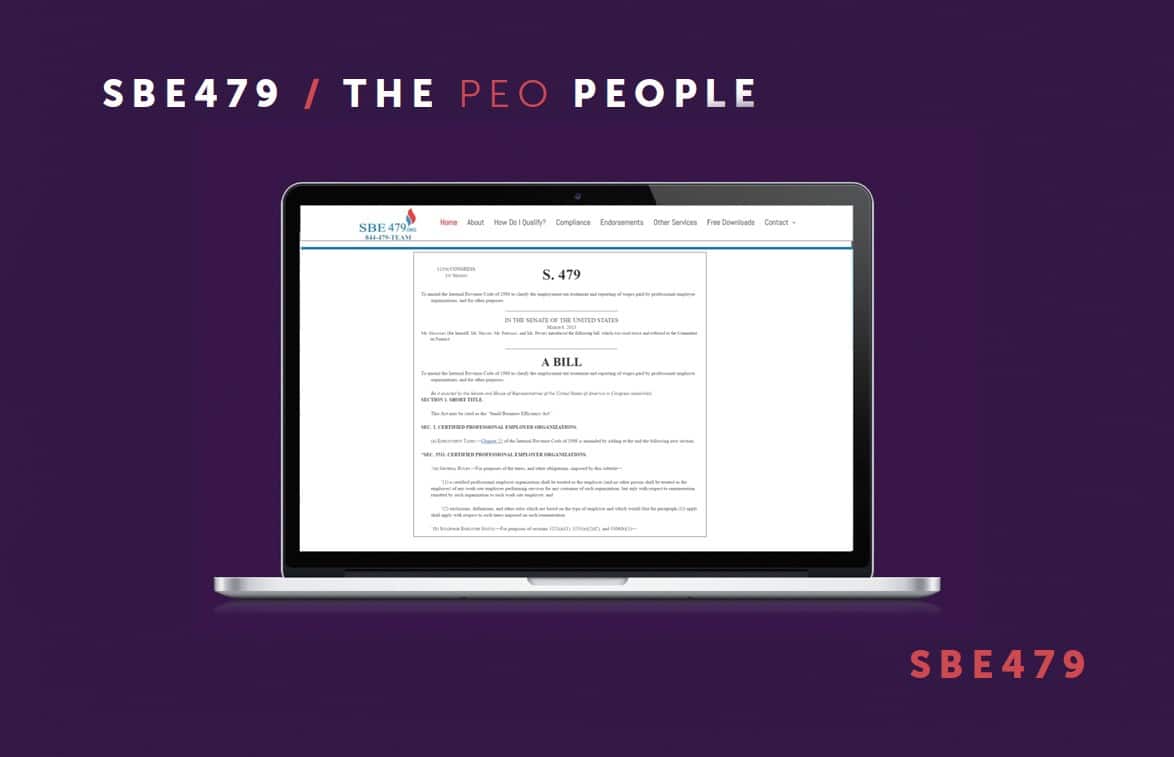
What is SBE479?
The Background:
Before this legislation, the large company buying groups were assisting small and medium-sized firms in operating better by sharing fortune 500 type tools and access to lower-cost, products and services. These options were offered to both member companies and to their employees. However under the existing tax code at the time, it was unclear whether these larger employer groups could actually offer some of these advantages to their member groups or to their employees since they were not actually part of them. In addition to this, it was unclear that if certain liabilities occurred, who would the responsible party for these liabilities be – including any penalties and fines that may be incurred.
The Purpose:
This act was to create certainty and clarity regarding the I.R.S., O.S.H.A., E.E.O.C., and D.O.L. positions surrounding these questions. Employers that joined these 479 organizations needed unambiguous comfort of the protections afforded by these programs. This congressional approval of Act 479 has now made it clear that the advantages of these buying groups are codified and real. Read more about how we help companies put this into action here.
The Ultimate Goal:
479 was to provide additional options, tools, and processes for American businesses to be more competitive and efficient. In fact, the actual name of the act is The Small Business Efficiency Act.
How was this Accomplished?
The ACT now clearly allows certified 479 organizations to literally share their E.I.N. number (their Employer Tax Identification Number) with member employers. By doing this the larger group becomes liable as the employer of record for tax and other liability purposes, including employer tax liabilities, for the smaller member groups.
The transfer and acceptance of these liabilities to the 479 plans:
Include all the penalties, fines and lawsuits as any employer would have –encompassing a range of business risks from sexual harassment and discrimination lawsuits, to wage payment improprieties and even extends to situations in which the owners and executives may be personally liable as officers and fiduciaries, etc.
Furthermore, this ‘sharing’ of the E.I.N. now allows the smaller groups to access the buying power and technology systems of these larger groups – for instance, this often, but not always, can dramatically reduce the cost of health benefits, worker’s comp benefits, and cost of HRIS systems, payroll, time and attendance systems, paperless onboarding, etc.
The Effect:
So Far over 130,000 small employers have joined one of the 900 Certified 479 programs across the United States, representing approximately three million employees. In addition to this Federal Act that helps American Businesses, several States have also passed statutes that mirror the Federal Act.
Why haven’t you heard about this program?
From my P&C broker, from my health insurance broker, from my payroll company, from my outside counsel?
Why do you think? The truth is this act provides all these programs through one organization, one vendor, and it is not them and they cannot do it all. They can’t provide lower rates with carriers because of the ACA and carrier rules – these organizations can. They cannot and certainly would not accept your liabilities, pay penalties and fines, or defend you and your company in litigation. These organizations can and do. So if you were them, would you tell your customers about a solution in which you would lose your fees, commissions, premiums, etc. This ACT answers those questions for you!
This is disruptive to them the way Uber is disruptive to the Taxi and Limousine Industry and Amazon is to brick-and-mortar retail. Now, why do you need a broker like us? Each Professional Employer Organization (or PEO) has its own salespeople with their own agendas. We don’t have any allegiance to any of those organizations, and truly want to help you find the best fit for your company. Talk to your PEO-OLOGIST and start comparing quotes.
Keep Me Updated
Keep Me Updated
Copyright © 2025 Small Business Efficiency at 479.

